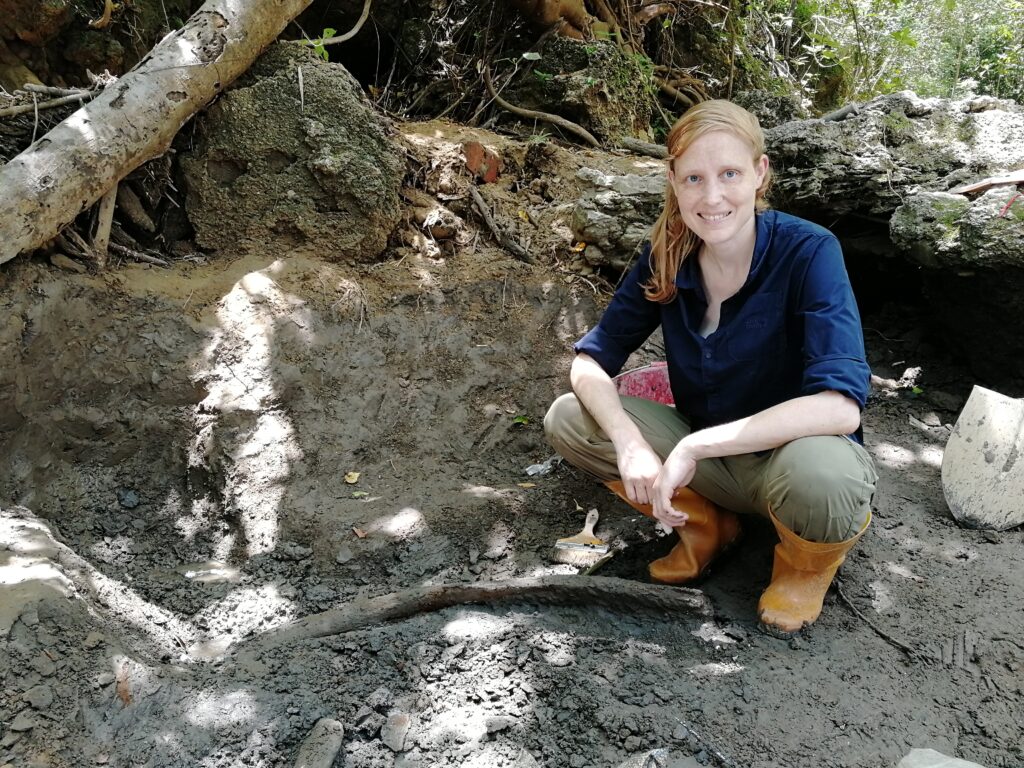PD Dr. habil. Anneke H. van Heteren
Section Mammalogy

Head of Section Mammalogy
curator
Research
Form and structure function as a medium for the interaction between organisms and environment. As a result, research in this area is essential for a comprehensive understanding of organismal function and adaptations to global change. Phenomics is the systematic study of phenotypical organismal traits dependent on large amounts of phenotypic data. This approach provides potent and versatile tools, such as geometric morphometrics and finite element analysis, to represent shape in statistically robust mathematical models to assess how organisms adapt to global change.
In this context, we delve into various subjects. One aspect involves comprehending how fossil bears adapted to climate and competition. We are a dynamic team with a growing list of publications.

Large mammal evolution in the Quaternary: Adaptations to climate and competition
In the light of current environmental changes, Pleistocene animals are an exceptionally good study system. Ice age ecosystems cyclicly went through global warming and, whereas some animals managed to adapt, others went (locally) extinct. Furthermore, Pleistocene animals are very closely related to extant animals, sometimes even belonging to the same species. Understanding how and why these animals adapted is paramount for understanding and helping extant animals.
Amongst others, I use bears as a model species. In the Pleistocene, there were two bear taxa in Europe: various cave bear lineages (Ursus spelaeus s.l., Ursus deningeri) and the brown bear (Ursus arctos). It is imperative that we understand what caused the cave bears to perish in the context of climatic warming at the end of the Pleistocene, whereas the brown bear survived, to prevent extant bear species from meeting the same fate.
The diet and evolution of the cave bear are strongly debated. I analyse cave bears and their living relatives using palaeophenomics. The cave bears show a similar evolutionary trajectory through morphospace to the panda (Ailuropoda melanoleuca) indicating similar adaptations to a diet consisting primarily of vegetation.
Excavations

Dr. Yang (National Museum of Natural Science, Taiwan) and I currently co-lead an international excavation team. We excavated a nearly complete fossil baleen whale. The specimen is possibly a grey whale, but the tympanic bullae were not preserved, so we will use geometric morphometrics on the mandible and the scapula, as well as peptide mass finger printing to confirm this species attribution. Bones of two additional marine mammals have been found. These latter two are possibly dolphins, but a more precise determination is not possible a this time. Furthermore, additional marine mammal bones have been found suggesting that this might be a cetacean Lagerstätte. The Hengchun fossil site is an exclusive opportunity to study an assemblage of multiple Pleistocene species of marine mammals. We will describe their morphology in detail, including the relative sizes of bones. We will compare them with their extant counterparts in the light of environmental change.
I am also presently involved with the excavation of Quaternary insular mammals on Cyprus in collaboration with Prof. Theodorou (University of Athens). Islands offer striking instances of evolution and have influenced both Charles Darwin and Alfred Russel Wallace. However, the majority of large mammals on islands became extinct at the end of the Pleistocene or during the Holocene, leaving us with limited knowledge about the evolutionary processes of large mammals on islands, which often produce dwarfed giant versions of their mainland counterparts. Excavations of Quaternary insular mammals on Cyprus are crucial for understanding the island’s unique evolutionary processes, patterns of extinction, and the ecological dynamics that shaped its endemic fauna.

